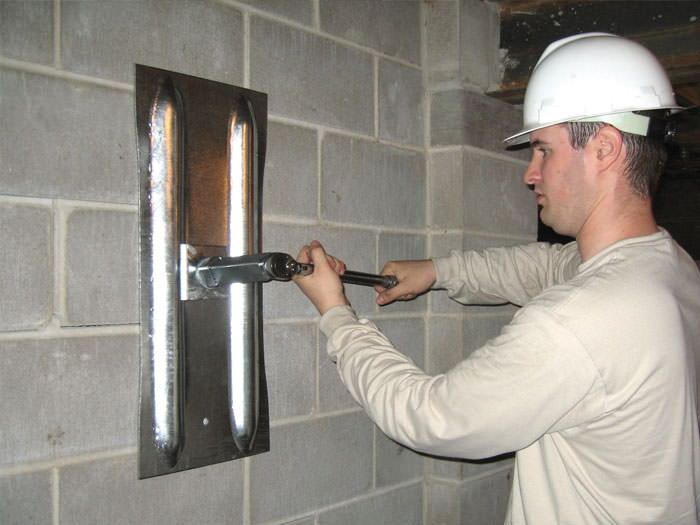The dream for many of us is the opportunity to build our own home. It gives us a freedom to creatively design the perfect living space for our family, including every desire, whim and fancy we’ve ever considered. The task is not one that should be undertaken lightly, however, and many hours of careful planning and strict budgeting is required to ensure what started off as following your dream does not end in financial ruin.
For most of us, building our own home will involve hiring in a number of contractors and workmen, from bricklayers to plumbers and landscape gardeners to joiners, although some may wish to undertake some of the work themselves. It’s extremely important that work such as fitting wiring, plumbing and gas is undertaken by certified professionals both to ensure the safety of your home and, in some cases, abide by the law.
This article offers a guide on one small part of building your own home. It takes you step by step through the process of attaching your wall plate to the foundations. It should only be followed by skilled workmen – do not risk your safety and your budget by attempting to do this without the relevant training and experience.

1. Planning
Firstly, there are a number of items you will need to have ready to fasten your wall plate to the floor. These include:
▪ Drill and drill bits
▪ Tape measure
▪ Hammer
▪ J-Bolts
▪ 2×4 or 2×6
▪ Safety gloves
▪ Safety goggles
▪ Socket wrench
The size of the bolt depends on the concrete you use. Ask in-store for brand specific, manufacture recommendations.
2. Layout Concrete
To install the wall plate you will first need to layout wet concrete. Pour it into the footing and smooth it out with a concrete float. Take care to achieve a smooth, even finish across the surface of the wet concrete. Ensure the concrete is deep enough for the bolts to protrude out of the surface by at least a couple of inches.
2. Measure Up
Before the concrete has dried, deduce from your blueprints where the bolts are to be fastened. They should be placed roughly every 6 feet and not more than a foot away from any wall base. Mark the locations with either a scratch or a small nail.
3. Insert the J Bolts
Before inserting the J bolts, mark each with a piece of masking tape or similar to ensure each is pushed into the concrete to the correct depth.
Insert the bolts at the marked locations before the concrete is dry, but after long enough for it to have hardened slightly. Insert the bolts at a slight angle and wiggle them gently to ensure any air bubbles are removed. Once the bolt is inserted as far as the masking tape, stand it straight and move onto the next bolt. Work your way around until every marked location has been filled.
If you have a particularly large area to cover, work in a pair or as a three to ensure the bolts are all inserted before the concrete dries.
4. Touch up the Concrete
Once the bolts have all been fitted, touch up any of the concrete that requires it. Ensure there are no air bubbles and that the surface is even and smooth. Let the concrete dry for up to seven days before attaching the wall plate.
5. Attach the Wall Plate
Finally, once the concrete has dried, you are ready to attach the wall plates. Remove the nuts from the bolts and 2×4 (or 2×6) into position on top of each. The top of the plate should then be hammered in to make indentations that mark the placement of the bolts. Then remove the board and drill a hole into the centre of each mark.
Attach the wall plates by taking each off the bolt and building the wall section. Slide the wall section onto the bolts section by section. Install the washers and nuts and tighten.
